The purpose of this article is to prepare any Swift developer interested in expanding their knowledge or any mobile developer looking to learn more about Swift for the process of effectively implementing the UI element known as UITabBarController. To achieve this, I'll walk you through the process of creating a simple Swift app with a basic implementation of the UITabViewController. This app will show you the current time, the current weather in your location, and your current location on the map.
You can take this as a pretty simple introduction to the world of Swift development. You can also check out my other Swift-related articles for more.
Now, before you start coding, it's essential that you understand the basics of the UITabBarController and the UIController framework that it's built on top of. So let's get into that.
UITabBarController Basics
A UITabBarController, like all other UIController-based UI elements in an iOS developer's toolset, is known as a navigation interface, or as Apple puts it: "A container view controller that manages a multiselection interface, where the selections determine which child view controller to display."
.png)
What Is a TabController?
What this means is that, just like a hierarchy, the UITabBarController functions as a parent container handling the complexities of navigation for you while displaying only the child view the user is presently interacting with, offering a straightforward interface.
One screen is visible at a time, keeping the UI simple and more approachable, while the rest of the views are accessible at the touch of the tab buttons on the bottom of the screen.
Now, unless you've been living under a rock, you've seen these before. Here's an example to ensure we're all on the same page.
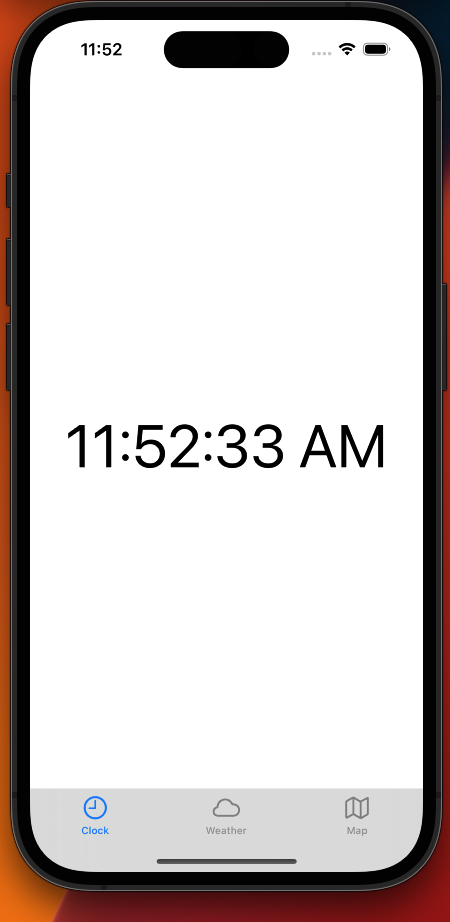
Simple, elegant, great.
Let's build it.
Creating a UITabBarController
Open XCode and create a new iOS app. Select Storyboard as your design framework of choice, and move into the Main storyboard.
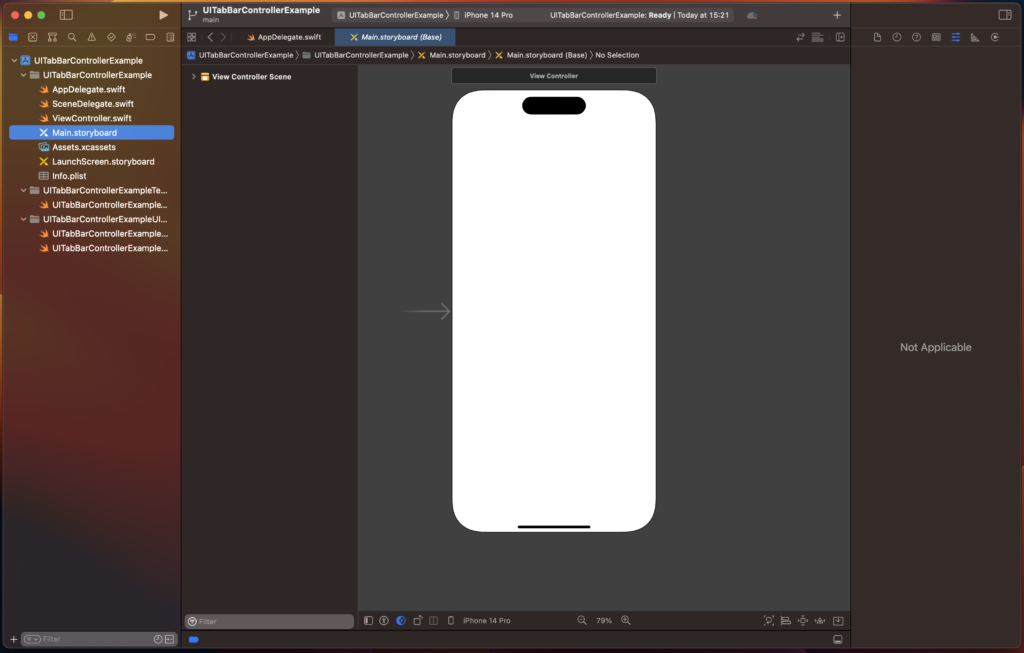
Note: If you want to know how to create great apps using SwiftUI, you should check out my other articles on the topic here.
Great! Now, you need to add the UITabBarController as the default controller, since the one that XCode starts you with is just a standard UIViewController.
Delete the original view controller and click on the plus (+) button on the top right of your developer tool. Then, search for the tab bar controller and simply drag it into the storyboard.

And there you go. You have everything you need for your new and fancy tab bar app. Well, mostly...
If you want to be adventurous and run your app, you'll see the following:
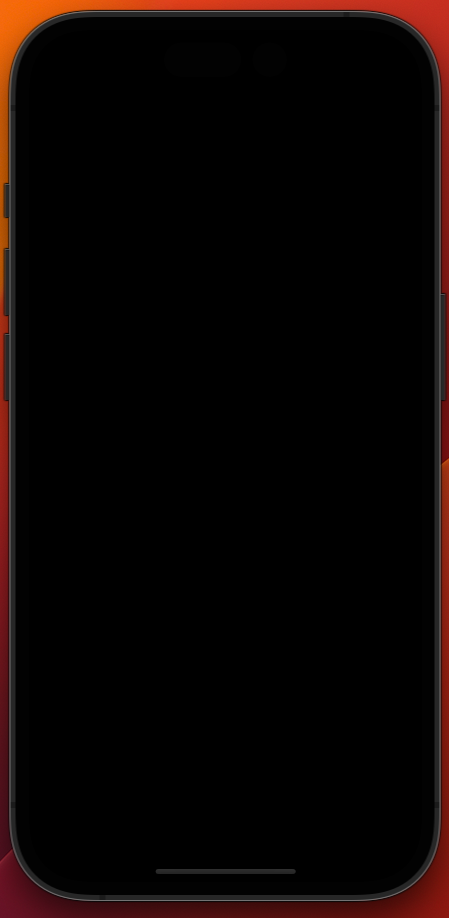
Now, what's going on here? First, let's check the console for some clues.

All right, that's helpful. This basically means that the app doesn't have a view controller set as the starting point—a simple fix.
Click on the parent controller, and then, in the settings tab on the right side corner, tick the Is Initial View Controller box.
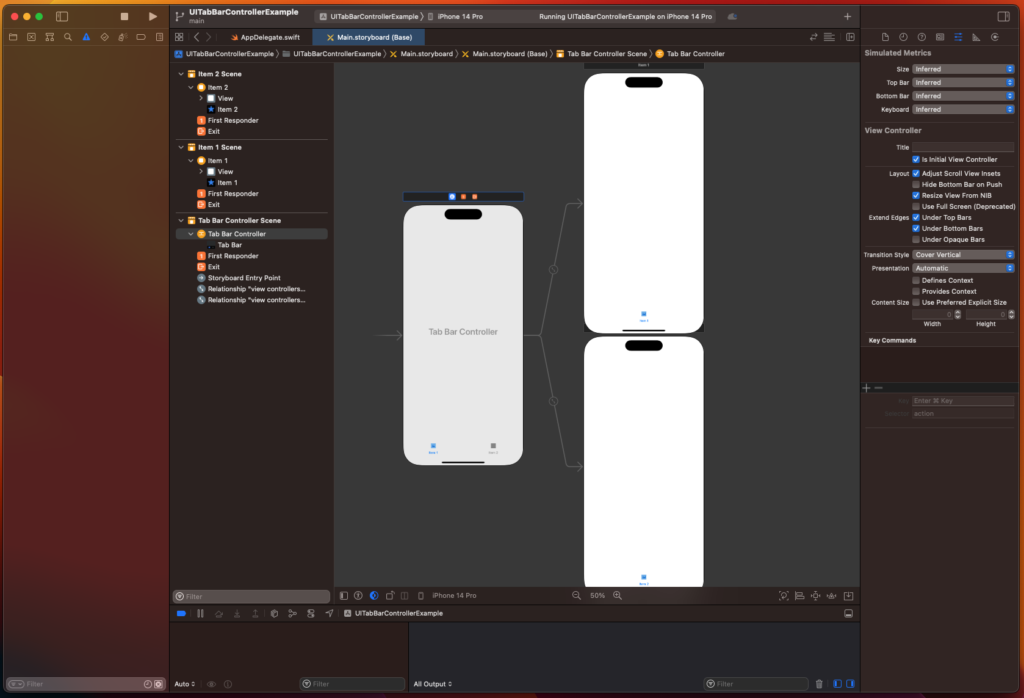
Now, rerun the code and...
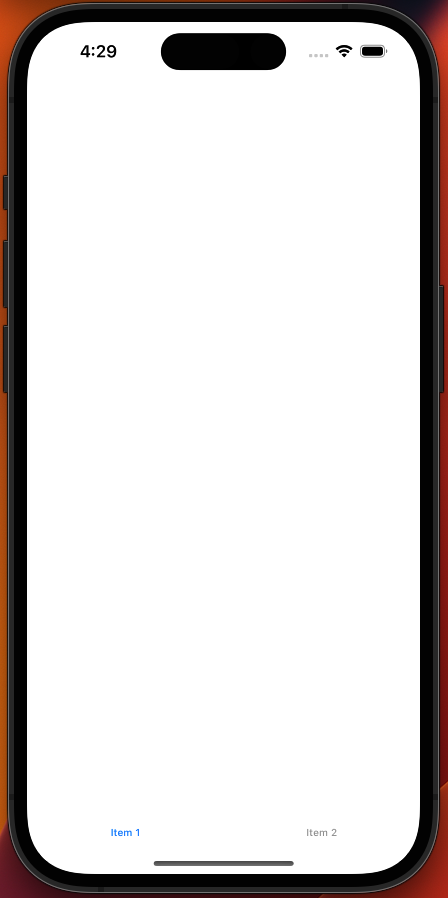
All right. Now we're talking!
Working on Your UITabBarController
So far, you've mostly been playing around with the default features and setup XCode offers. No code has been written. But don't worry, to actually use the power of the tab bar controller, you'll be programming some views in it that are actually more useful than a blank screen.
Adding Some Views
The first view you'll add to your tab bar controller app is a simple clock.
To simulate a clock, all you need is a single label that's constantly updated with the device's time every second. So, start by dropping a label and setting the view constraints and connections.
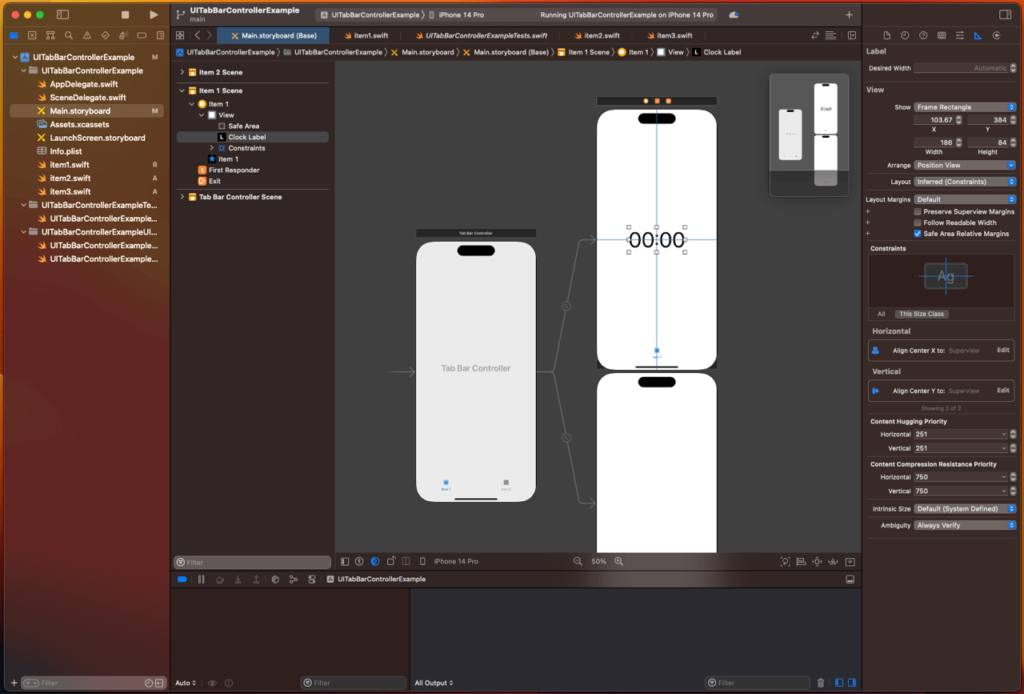
Now, create some Swift classes with their class definitions. You can call them item1.swift, item2.swift, and item3.swift on your project. Following that, go to the respective view on the storyboard and set the class of the view controller to be the class of item1.
Once you've done that, go to the class and add the following code:
Finally, set the label referencing outlet to the label defined in the Swift class you created. Now, run your code, and you should see a clock running on the item1 tab.

Adding More Views
For the second tab, let's add a new controller: a table view controller. This controller will display some weather information on a table structure. Nothing complicated. Start by dropping a TableViewController from the items, just as you did with the TabBarController. Then, with the control button pressed, drag a connection between the TabBarController and the TableViewController, and set the relationship as a child view reference.
That's how you add more views to your tab bar.
Following that, modify the code on your item2.swift class to the following:
I know it's a lot of code, but don't let it intimidate you. Most of it is standard code used on all table view designs, and it's pretty straightforward.
For now, focus on the @IBOutlet.
Like last time, you need to connect the view from the storyboard to the actual class. You can do this similarly by dragging and dropping with the control button pressed.
Now, rerun your code, and it should show you the weather information like the following:

Now, for the final view, let's drop a MapView on the last view controller associated with the tab bar and expand it to fit the view edges. Again, don't forget to set the constraints to match the edges. Otherwise, it won't keep the size, depending on the device.
Put the following code on the item3.swift class and connect the @IBOutlet accordingly.
Here, you'll also need to set the permissions to your current location on the info.plist file so that the device requests them on load.
Now rerun your app, and that's it. You got an interactive map centered on your location!
Customizing the TabBarController
As you've seen, working with a TabBarController is pretty straightforward. Adding your views is pretty much a drag-and-drop affair, and ensuring you have your outlets adequately set is easy. And if you want to make further customizations to the tab bar section, well, that's pretty simple too.
First, to change the text and icon for the pages, you can do so on the corresponding view controller settings.
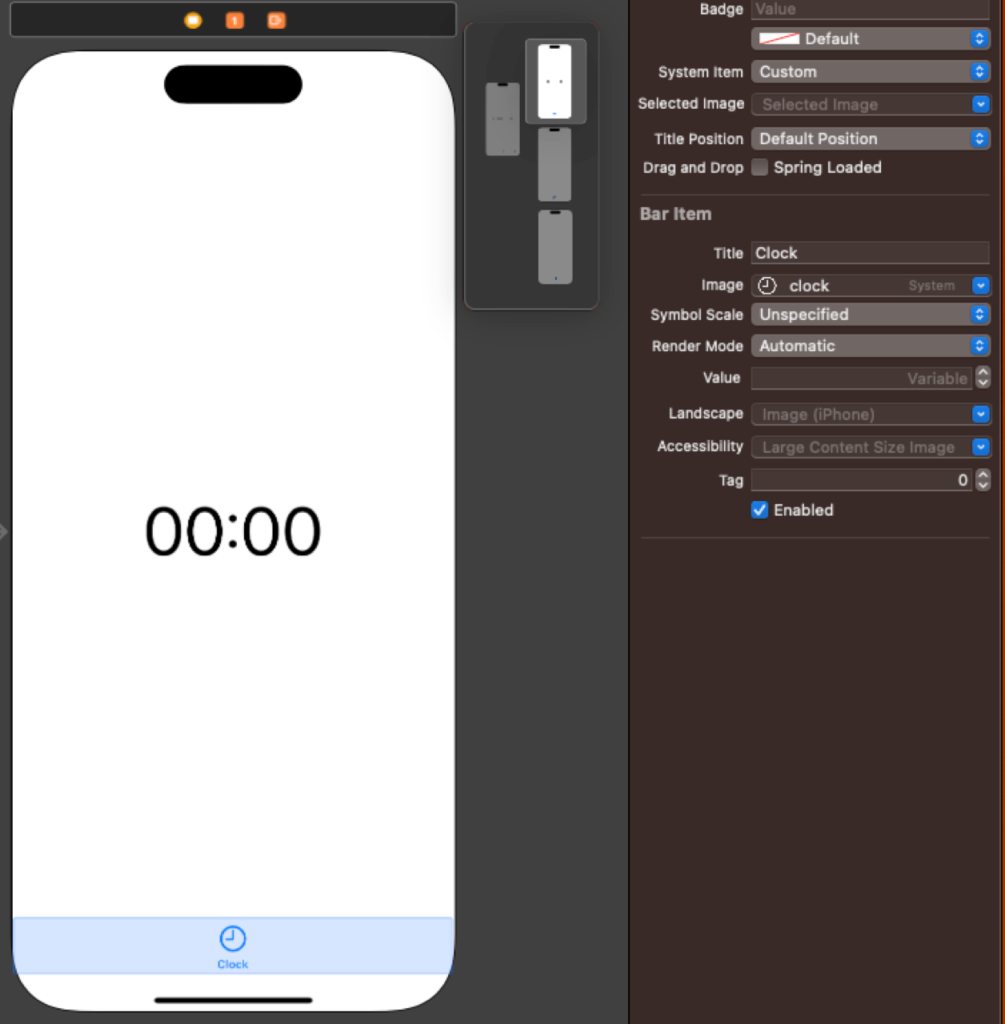
Secondly, to change the style and format of the tab bar, you can modify the settings in the TabBarController bar itself. For example, you can set the background, font, tint, style, and, most importantly, appearance.
This last setting controls whether the tab bar lives on top of your content (Scroll Edge) or below it (Standard). If it lives on top, the content will be partially visible underneath with transparency when you scroll. However, you can change this, if you prefer.
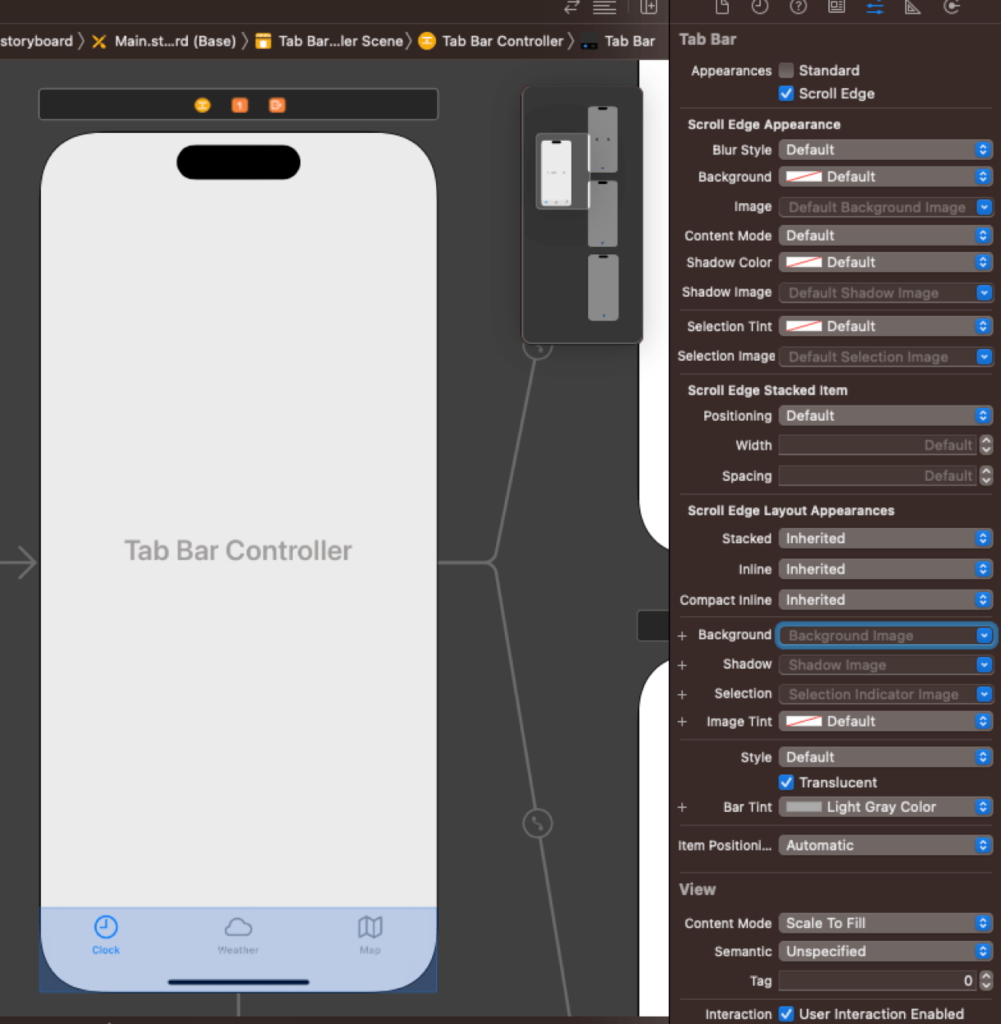
You can find the complete project here.
I recommend you that you play to your heart's content and try to make the best out of the features available. However, if you're working on a large project and you need to ensure your code is ready for prime time, you'll need to do some serious testing.
Testing can be difficult and time consuming. But it doesn't have to be. If you're looking for a more comprehensive and convenient testing solution, I recommend starting a trial with Waldo's extensive toolset for UI testing. It requires no coding and is very approachable, even for beginners.
Moving On
In the world of mobile development, there are very few staples of tried-and-tested UI structures like the tab bar. Perhaps due to its simplicity and ease of use, it's one of the most common design patterns followed by apps all over the App Store.
And this is not a situation unique to Apple. Android has an even more prominent representation of this design pattern in its library, with the vast majority of apps making use of it to switch between maybe two or three screens.
It's clear that if you want to take your journey in the world of mobile development to the next level, the tab view is a tool you need to master and have in your toolset.
Automated E2E tests for your mobile app
Get true E2E testing in minutes, not months.









